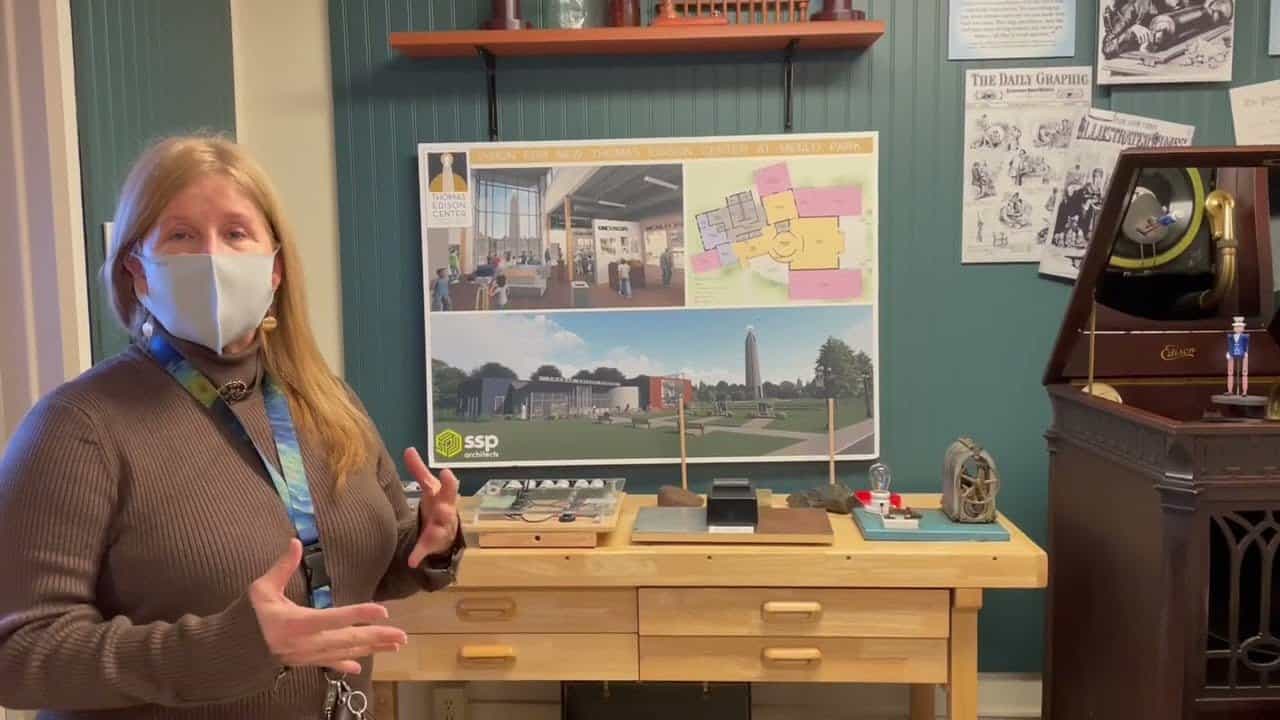EDISON – The Edison Memorial Tower Corporation is embarking on a grassroots community effort to fundraise for the proposed expansion of the museum at the Thomas Edison Center at Menlo Park.
“We’re really working to get people interested in creating a museum appropriately sized to honor the legacy of Thomas Edison at Menlo Park,” said museum Director Kathleen Carlucci, adding the expansion will not cost anything for taxpayers.
Carlucci said their goal right now is to move ahead on a timeline, start a fundraising campaign and let the public know what they are doing.
She noted the expansion efforts have the support from state officials including State Sen. Patrick Diegnan (D-18) and Assemblyman Robert Karabinchak (D-18), as well as former Edison mayors, and current Mayor Sam Joshi.
In 2019, the Thomas Edison at Menlo Park (TECMP), led by Carlucci and Leonard Sendelsky, chair, partnered with Jeanne Perantoni, principal and CEO at SSP Architects, Somerville, and Tammy Stouchko, an associate at SSP Architects, to help identify a future vision for the center.
The discussions with the public identified the needs of the center in terms of programming and physical space, surrounding property and access to the site.
Through public comment, it was determined that timeliness, a place to eat and more space were common desires for the Thomas Edison Center, members have said.
The proposed expansion brings people behind the Edison Memorial Tower and as they are driving on Frederic Street, the tower comes into view. The concept includes a 50-space parking lot and a combined multipurpose visitor space – auditorium, gallery and classroom space – as well as open space for outdoor activities, including bird watching, geocaching and walking trails.
A cafe is also proposed next to the gift shop.
Perantoni had said a replica of an electric street is proposed on Christie Street to take people back in time and to let them know they are entering a special zone. The street will be lined with banners and signs to add to the character of the area.
The proposed 11,250-square-foot expansion total is estimated at $8.5 million, Carlucci said, adding the expansion is expected to be done in phases.
Currently the two-room museum is 400 square feet, which is about the size of half a classroom.
The museum sits within the 36-acre state park and is dedicated to Edison and his work from 1876 to 1884 when he lived in Menlo Park, including the incandescent light and phonograph, as well as the work done by a lot of the men who were part of his first organized research and development laboratory.
“That’s what enabled him to be so successful,” Carlucci said of the team-oriented products. “Four hundred square feet is not enough room to portray the famous inventor and his team. We actually have three more storage units filled with materials we would love to develop interpretation for.”
In 2019, prior to the pandemic, the museum had visitors from 63 different countries and every state in the union, Carlucci said.
“We never once had to say who Thomas Edison was,” she said.
Perantoni had said Edison’s laboratory was raw space and he had the freedom to try everything. Many times, fires occurred through trial and error during his experiments.
And just like Edison’s laboratory hundreds of years ago, she had said there are endless possibilities with raw space, natural light with prisms, exposed structures and concrete floors for the center, she said.
In November 1877, one of Edison’s first major inventions at Menlo Park was the phonograph, which was a basic machine that allowed a person to speak into a diaphragm that was attached to a pin that made indentations on a paper wrapped around wood, according to the Thomas Edison Center website.
Edison’s next big breakthrough came when he invented a bamboo filament to create a successful incandescent lightbulb. On New Year’s Eve 1879, Christie Street became the world’s first street to be lit by incandescent light bulbs with the help of a power system designed by Edison, according to the Thomas Edison Center.
Edison created some of the world’s most important and some of his greatest inventions at Menlo Park. While headquartered there, he applied for about 400 patents on inventions big and small.
The museum is open to the public from 10 a.m. to 4 p.m. on Thursdays, Fridays and Saturdays.
Visitors are encouraged to take a guided tour of the museum’s collections of artifacts – a model of Edison’s laboratory, early phonographs and light bulbs, historic photographs, and a Menlo Park era electric generator or “dynamo,” and hear demonstrations of historic phonographs and try some hands-on demonstrations.
The museum provides guided tours to a wide variety of students from kindergarten to high school, senior citizens, professionals, families, scouts, summer campers, and many others, from across America and around the world. These tours, which are tailored to the specific audience, are typically scheduled for days when the museum is open. Special requests can be made for large groups of 10 or more on other weekdays.
The mission of the Thomas Edison Center is to honor the memory of Edison and to educate the public about the inventor, his significant accomplishments at the site and his impact on modern research and development.
The center is in Edison State Park on Christie Street and consists of the Art Deco Edison Memorial Tower and a small museum and education center.
The center and the park are administered by the New Jersey Department of Environmental Protection Division of Parks and Forestry, the township of Edison and the nonprofit Edison Memorial Tower Corporation.
For more information, email [email protected] or visit www.menloparkmuseum.org.

